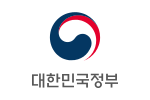Ministry of Oceans and Fisheries
|
| |
| Agency overview | |
|---|---|
| Agency executives |
|
| Korean name | |
| Hangul | 해양수산부 |
| Hanja | 海洋水産部 |
| Revised Romanization | Haeyangsusanbu |
| McCune–Reischauer | Haeyangsusanbu |
The Ministry of Oceans and Fisheries (MOF, Korean: 대한민국 해양수산부), is a cabinet-level division of the government of South Korea. It takes overall responsibilities for maritime and fisheries sectors in general, ranging from the promotion of maritime safety and security, the protection of the marine environment, the development of port and fishing ports, the research and development on polar issues to the management and sustainable use of fishery resources and the promotion of marine leisure activities. Its headquarters is located at 94 Dasom-2 ro, Sejong City.[1] Before the merger in 2008, the Ministry of Maritime Affairs and Fisheries was located in 140-2 Kye-Dong, Jongro-gu, Seoul City. [2]
MOF was established as part of a general cabinet reorganization in 1996. For the preceding 35 years, maritime functions had been divided among various departments. From 1955 to 1961, under the First Republic of South Korea, a Ministry of Marine Affairs existed, and the current ministry traces its origin to that body.
In 2008, merging Ministry of Construction and Transportation and MOMAF, Ministry of Land, Transport and Maritime Affairs is established. In 2013, the Ministry of Oceans and Fisheires was reestablished with government reorganization.
See also
References
- ↑ "Home." Ministry of Oceans and Fisheries. Retrieved on 2 January 2014. "(우)339-012 세종특별자치시 다솜2로 94 정부세종청사 5동 해양수산부"
- ↑ "Home (Archive.org)". Archived from the original on July 20, 2006. Retrieved 4 January 2014. "서울특별시 종로구 계동 140-2번지 (우:110-793)"
External links
- Ministry of Oceans and Fisheries (Korean)
- http://www.mof.go.kr/eng/index.do (English)

